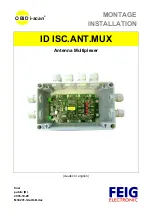
Chapter 4
Signal Conditioning
©
National Instruments Corporation
4-5
Channel Configurations
You can configure the analog input channels of an MIO DAQ board for one
of three input modes: differential input, referenced single-ended input, or
nonreferenced single-ended. These modes may be referred to as DIFF,
RSE, and NRSE input modes, respectively.
As described in Chapter 2, Configuration and Installation, of your MIO
user manual, the input configuration of the MIO board depends on the type
of signal source. There are two types of signal sources: nonreferenced or
floating signals and ground-referenced signals. To measure floating signal
sources, configure the MIO board for referenced single-ended input or
differential input with bias resistors. To measure ground-referenced signal
sources, configure the MIO board for non-referenced single-ended input or
differential input. Both types of signal sources and the recommended
methods for MIO board connection are discussed as follows.
Connecting Nonreferenced or Floating Signal Sources
A floating signal source is a signal source that is not connected in any way
to the building ground system, but has an isolated ground-reference point.
If an instrument or device has an isolated output, that instrument or device
falls into the floating signal source category. Some examples of floating
signal sources are outputs for the following: thermocouples, transformers,
battery-powered devices, optical isolators, and isolation amplifiers. You
must tie the ground reference of a floating source to the ground of the DAQ
board to establish a local or onboard reference for the signal.
Differential Inputs
To provide a return path for the instrumentation amplifier bias currents,
floating sources must have a resistor connected to AIGND on one input if
the signal is DC-coupled, or both inputs if the signal is AC-coupled.
For more detailed information on connections to floating signal sources
and differential inputs, refer to the configuration chapter in the user manual
that came with your MIO board.
You can install these bias resistors in positions B and D (Table 4-1 and
Figure 4-1) of the AMUX-64T board. Figure 4-2 shows both the schematic
and the component placement for a single 100 k
Ω
bias return resistor on the
negative input from a floating source connected to channel 1
(the D position in Table 4-1). You can build additional signal conditioning
circuitry, such as filters and attenuators (described in
, and
later in this chapter), in the open component positions.
















































